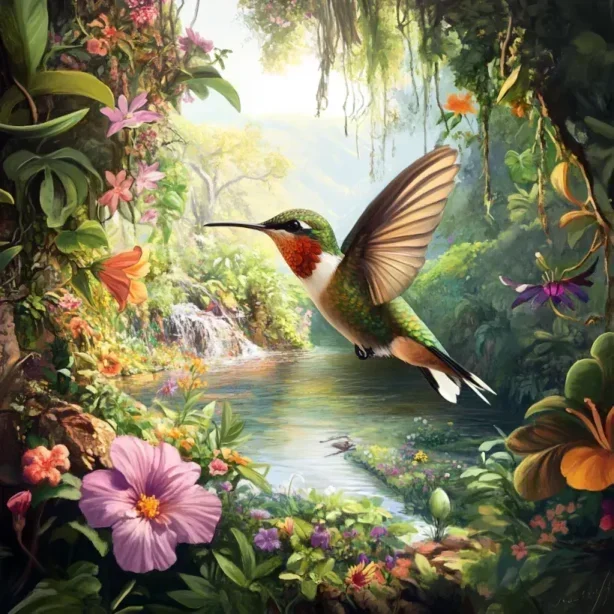Imagine a creature so small it could comfortably perch on a pencil, yet powerful enough to reveal intricate stories about entire ecosystems. Enter the hummingbird: part feathered jewel, part environmental warning system, and entirely too fabulous to be ignored.
The Canary in the Ecological Coalmine
Hummingbirds aren’t just adorable aerial acrobats—they’re living, breathing environmental sensors. Their hyper-sensitive biology makes them uniquely positioned to reflect environmental changes with remarkable precision. If ecosystems could send text messages about their health, hummingbirds would be their preferred messaging service.
Why Hummingbirds Matter
These diminutive birds are environmental indicators for several critical reasons:
- Metabolic Sensitivity
- Extremely high metabolism
- Require constant, precise nutrition
- Rapid response to environmental fluctuations
- Essentially, they’re the biological equivalent of a smartphone’s battery indicator
- Nectar Dependency
- Directly linked to flowering plant health
- Reflect changes in:
- Plant diversity
- Climate patterns
- Pollination network stability
- If hummingbirds start struggling, something’s definitely wrong in the neighborhood
Measuring Environmental Stress
Scientists track hummingbird populations and behaviors to understand broader ecological trends:
Population Dynamics
- Rapid population changes signal environmental disruption
- Migration pattern alterations indicate climate shifts
- Breeding success rates reveal ecosystem stability
Specific Environmental Indicators
Habitat Quality Metrics:
- Flower diversity and abundance
- Insect population health
- Climate change impacts
- Pesticide and pollution levels
A Serious Game of Ecological Hide and Seek
While the topic is serious, the research can be surprisingly entertaining. Imagine ornithologists spending hours watching these tiny creatures, essentially playing a high-stakes game of environmental detective—except the clues are measured in wing beats per second and nectar consumption rates.
Climate Change: The Unwelcome Guest
Hummingbirds are experiencing climate change’s effects with painful immediacy:
- Shifting flower blooming periods
- Disrupted migration routes
- Increased competition for resources
- Reduced habitat viability
It’s like they’ve been involuntarily enrolled in the world’s most stressful adaptation course, with survival as the only passing grade.
Conservation Implications
Understanding hummingbird health means:
- Predicting broader ecosystem challenges
- Developing targeted conservation strategies
- Creating early warning systems for environmental degradation
The Unexpected Humor in Serious Science
There’s something darkly comedic about relying on a creature smaller than a golf ball to understand complex global environmental systems. It’s nature’s version of using a toy car to diagnose problems in a jumbo jet—except this toy car is incredibly precise and has been refined through millions of years of evolution.
Conclusion: Tiny Messengers, Massive Message
Hummingbirds remind us that in ecology, size doesn’t determine significance. These miniature marvels carry massive environmental narratives, their delicate existence a powerful testament to the intricate, interconnected web of life on our planet.
So the next time a hummingbird zips past your window, remember: you’re not just seeing a bird. You’re witnessing a living, breathing environmental report—complete with wings, attitude, and an impressively high-stakes survival strategy.


